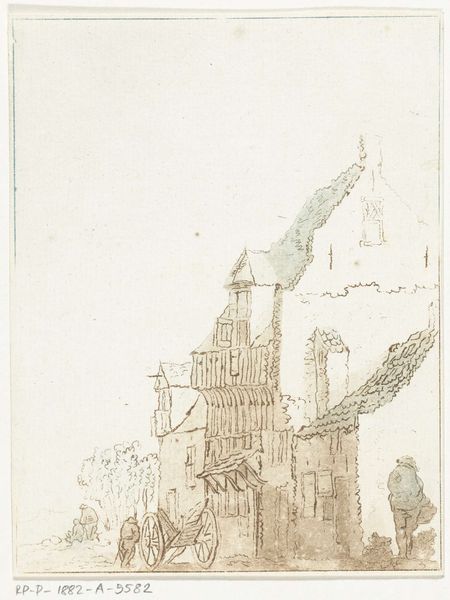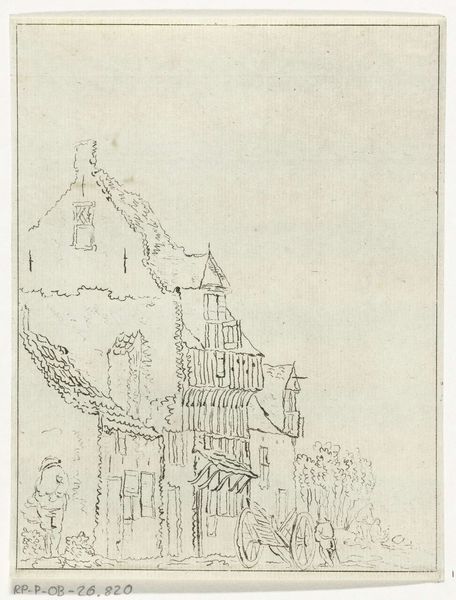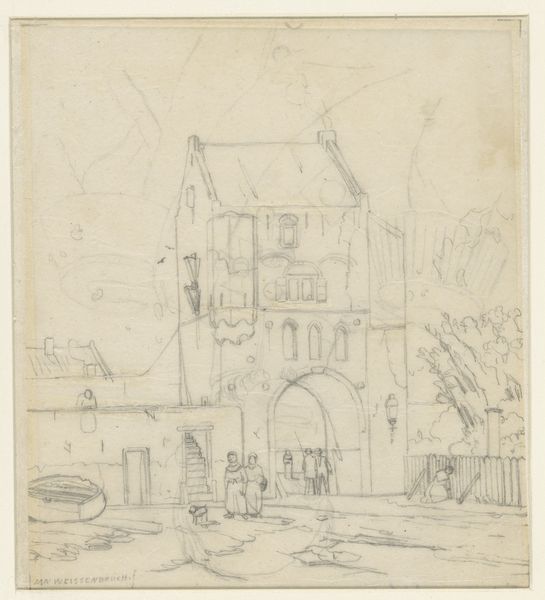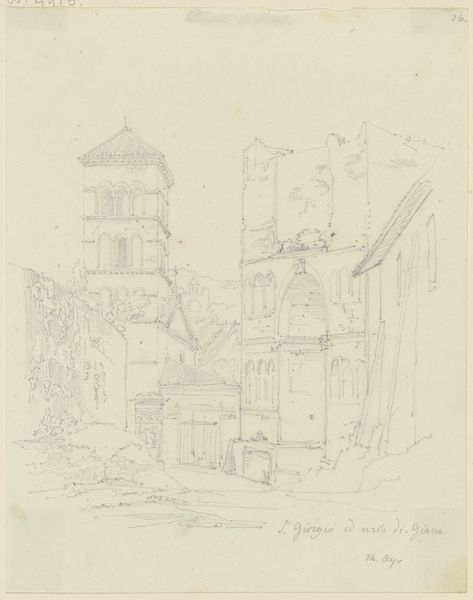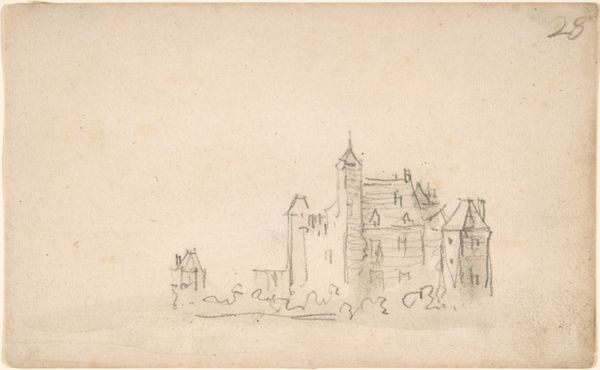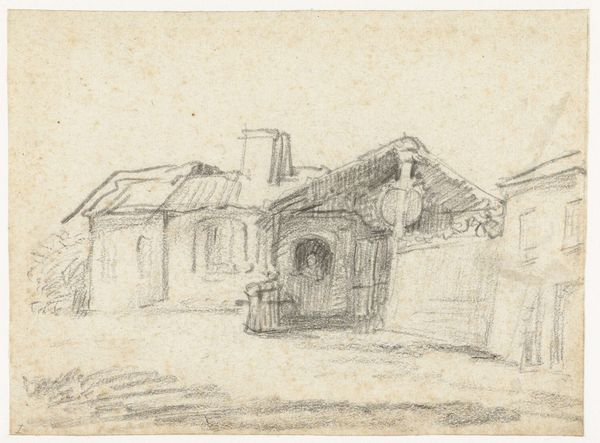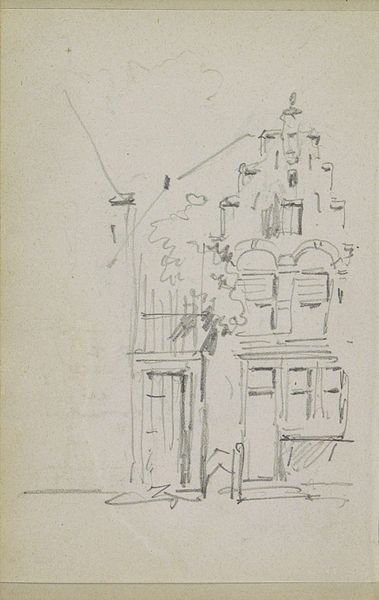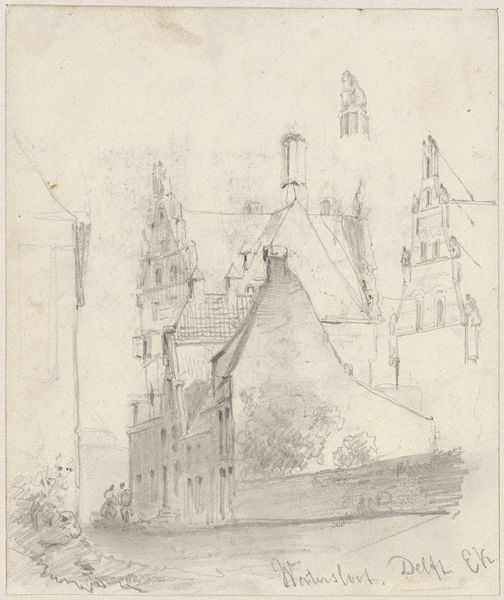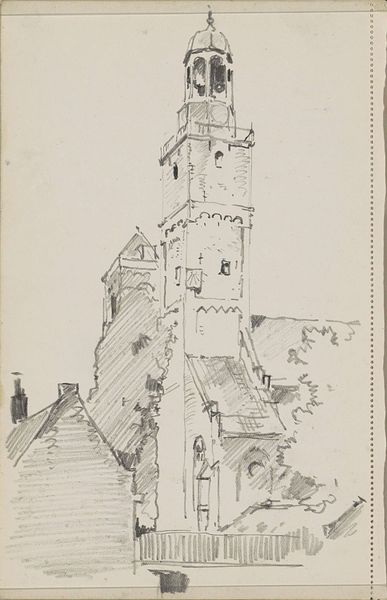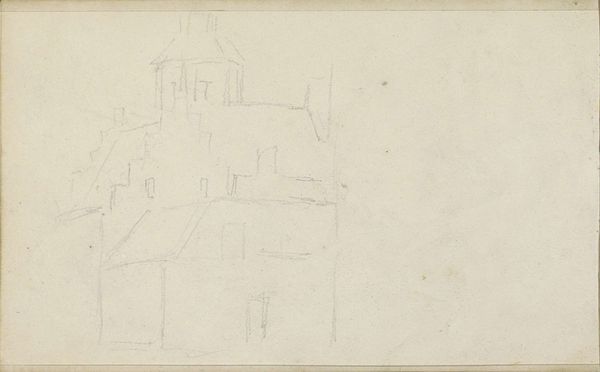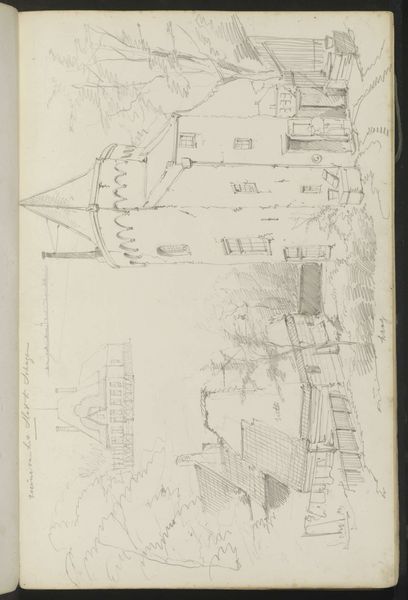
drawing, pencil
#
drawing
#
neoclacissism
#
quirky sketch
#
hand drawn type
#
landscape
#
personal sketchbook
#
idea generation sketch
#
sketchwork
#
ink drawing experimentation
#
pen-ink sketch
#
pencil
#
sketchbook drawing
#
cityscape
#
sketchbook art
#
realism
#
initial sketch
Dimensions: height 230 mm, width 193 mm
Copyright: Rijks Museum: Open Domain
Everhardus Koster made this pencil drawing of the Nieuwe Kerk and a stepped gable in Delft at an unknown date. Delft, a city in the Netherlands, experienced a golden age in the 17th century, becoming known for its Delftware pottery and as the home of painter Johannes Vermeer. Koster's sketch provides insight into the social and cultural landscape of 19th-century Holland, a period marked by a growing interest in national identity and historical preservation. The Nieuwe Kerk, or New Church, was an important symbol, as the burial site of the Dutch Royal Family. The stepped gable, a characteristic feature of Dutch architecture, evokes a sense of nostalgia for the past. By studying municipal records, architectural plans, and historical accounts, we can better understand the relationship between art, national identity, and urban development in 19th-century Holland. Art becomes more meaningful when we consider its social and institutional context.
Comments
No comments
Be the first to comment and join the conversation on the ultimate creative platform.
